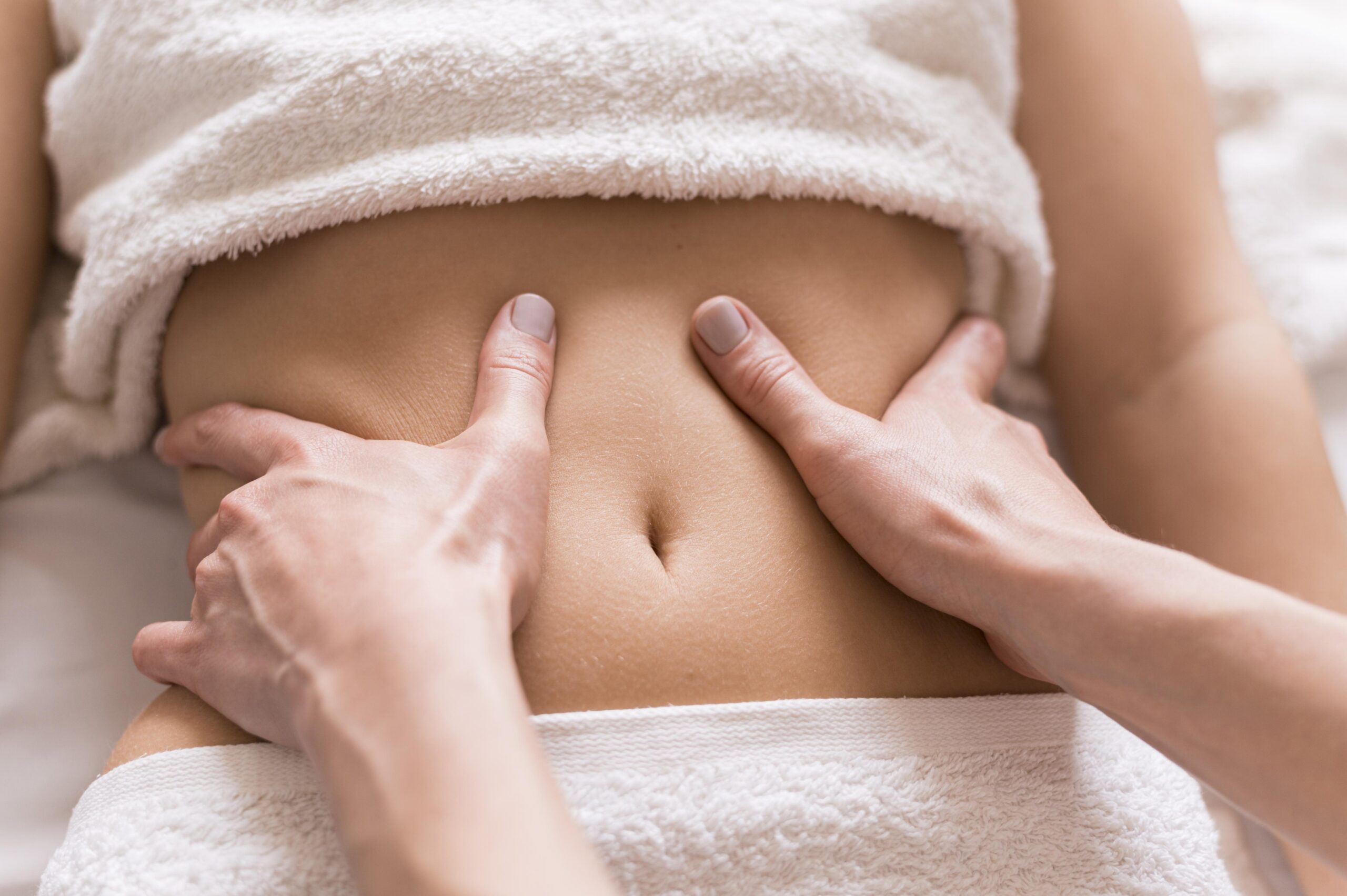When experiencing bloating, finding relief through natural means like farting can be beneficial.
Here are some tips on how to fart when bloated:
Change Positions:
Changing positions is a simple yet effective strategy to relieve bloating by encouraging the release of trapped gas. When you alter your posture, you create opportunities for the gas to move more freely through the digestive tract.
Here’s a bit more detail on how changing positions can help alleviate bloating:
1. Sitting Upright:
When you sit upright, especially on a firm chair, you allow your abdomen to expand and contract more naturally. This change in position can help disperse gas and provide relief from bloating.
2. Lying on Your Left Side:
The anatomy of the digestive organs plays a role in the effectiveness of this position. Lying on your left side can promote the downward movement of gas from the stomach into the intestines, aiding in its expulsion.
3. Knee-to-Chest Pose:
Also known as the wind-relieving pose in yoga, this position involves lying on your back and bringing your knees to your chest. This posture compresses the abdomen, facilitating the release of gas and reducing bloating.
Experimenting with different postures and movements can help identify what works best in relieving bloating.
Keep in mind that these are natural, non-invasive methods that can be easily incorporated into your daily routine for improved digestive comfort.
2. Engage in Physical Activity:
Engaging in physical activity, such as walking or light exercises, is a proactive approach to alleviate bloating. Physical movement stimulates the muscles in the digestive tract, aiding the natural progression of gas through the intestines.
This increased activity helps relieve abdominal pressure and discomfort associated with bloating.
Whether it’s a short stroll or gentle yoga, incorporating regular physical activity into your routine promotes overall digestive health and can be particularly effective in preventing and reducing bloating.
related: How to avoid farting in yoga?
3. Massage Your Abdomen:
Gently massaging your abdomen can be a soothing and effective method to alleviate bloating.
Using gentle, circular motions with your fingertips, start from the lower right side of your abdomen and move in a clockwise direction.

This massage technique helps stimulate the muscles of the digestive tract, promoting the movement of gas and reducing discomfort.
Applying light pressure can also ease tension and contribute to overall relaxation.
Remember to be mindful of your body’s response, adjusting the pressure as needed, and if at any point the massage causes pain, it’s advisable to stop and consult with a healthcare professional.
4. Stay Hydrated:
Staying hydrated is a fundamental key to preventing and reducing bloating. Proper hydration supports overall digestive health by helping to soften stool and promote regular bowel movements.
When you drink an adequate amount of water, it aids in the efficient breakdown of food and prevents constipation, a common contributor to bloating.
Opt for water as your primary beverage, and consider adding herbal teas for extra benefits.
Ensuring that your body remains well-hydrated not only supports digestive function but also helps maintain the balance of fluids in your body, reducing the likelihood of bloating and discomfort.
5. Limit Gas-Producing Foods:
To curb bloating, it’s crucial to limit the consumption of gas-producing foods. Carbonated beverages introduce excess carbon dioxide, while spicy, fried, or fatty foods can slow digestion, leading to increased gas.
Vegetables like broccoli, cabbage, and onions, along with beans, contain compounds contributing to gas production. Apple or prune juice, high in fructose, and dried fruits with concentrated sugars can ferment in the gut, causing bloating.
READ: How to eat beans without farting?
Additionally, be wary of artificial sweeteners like sorbitol, mannitol, or maltitol, commonly found in low-carb or sugar-free foods, as they may exacerbate bloating. Mindful dietary adjustments can significantly alleviate discomfort.
6. Use Herbal Remedies:
Incorporating herbal remedies into your routine can provide natural relief from bloating. Herbal teas, particularly chamomile and peppermint, have properties that soothe the digestive system.
Chamomile, known for its anti-inflammatory effects, helps relax the muscles in the gastrointestinal tract, easing gas-related discomfort.

Peppermint, with its menthol content, can reduce bloating by relaxing the muscles of the intestines. Consider sipping on these teas after meals or when experiencing bloating.
Additionally, experimenting with other herbs like fennel seeds or ginger may offer further benefits in promoting digestive health and reducing bloating naturally.
Remember, it’s essential to listen to your body and find what works best for you.
If bloating persists or is accompanied by severe pain, it’s advisable to consult with a healthcare professional to rule out any underlying medical conditions. Embracing natural bodily functions, including farting, is a normal and healthy part of digestion.
FAQs: How to fart when bloated?
1. What to do when you’re bloated but can’t fart?
If you’re unable to pass gas, try changing your position, such as walking or gently massaging your abdomen. Consuming peppermint or chamomile tea may also help relax the digestive tract.
2. How do you fart out trapped gas?
Changing positions, engaging in physical activity, and practicing deep breathing can help release trapped gas. Additionally, consider trying wind-relieving yoga poses to alleviate discomfort.
3. Is it good to pass gas when bloated?
Yes, passing gas is a natural and healthy way to relieve bloating. Suppressing the urge to fart can exacerbate discomfort, so allowing the release of gas is beneficial.
4. What position relieves gas pain?
Positions like lying on your left side or practicing the wind-relieving yoga pose can aid in relieving gas pain. Experiment with different postures to find what works best for you.






